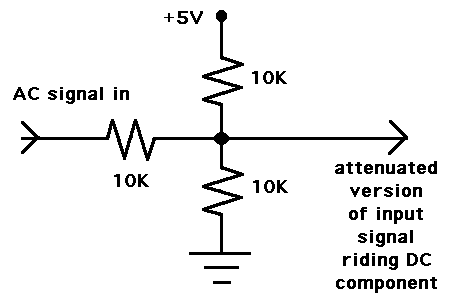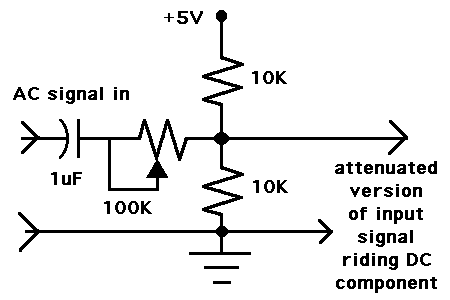kobre98
Full Member level 2
- Joined
- Sep 18, 2011
- Messages
- 145
- Helped
- 0
- Reputation
- 0
- Reaction score
- 0
- Trophy points
- 1,296
- Location
- Gaza, Palestine
- Activity points
- 2,523
hi guys,
i'm trying to build a circuit that will take the inverting dc voltage output from the pc speaker out and level shift it then using it as input to pic and send it back serially to pc program,
the idea is to read the voltage signal (audio) and input the reading to pc
i searched and found a lot of articles that talks about using 741 op-amp for this purpose
level shifting and getting analog output that can be used as input to pic microcontroller
does anyone have a circuit schematic that i can use and can do this ?! or at least tell me what specification do i need for resistors and capacitors and how to know the proper values for them before connecting the circuit ?!
regards,
i'm trying to build a circuit that will take the inverting dc voltage output from the pc speaker out and level shift it then using it as input to pic and send it back serially to pc program,
the idea is to read the voltage signal (audio) and input the reading to pc
i searched and found a lot of articles that talks about using 741 op-amp for this purpose
level shifting and getting analog output that can be used as input to pic microcontroller
does anyone have a circuit schematic that i can use and can do this ?! or at least tell me what specification do i need for resistors and capacitors and how to know the proper values for them before connecting the circuit ?!
regards,

